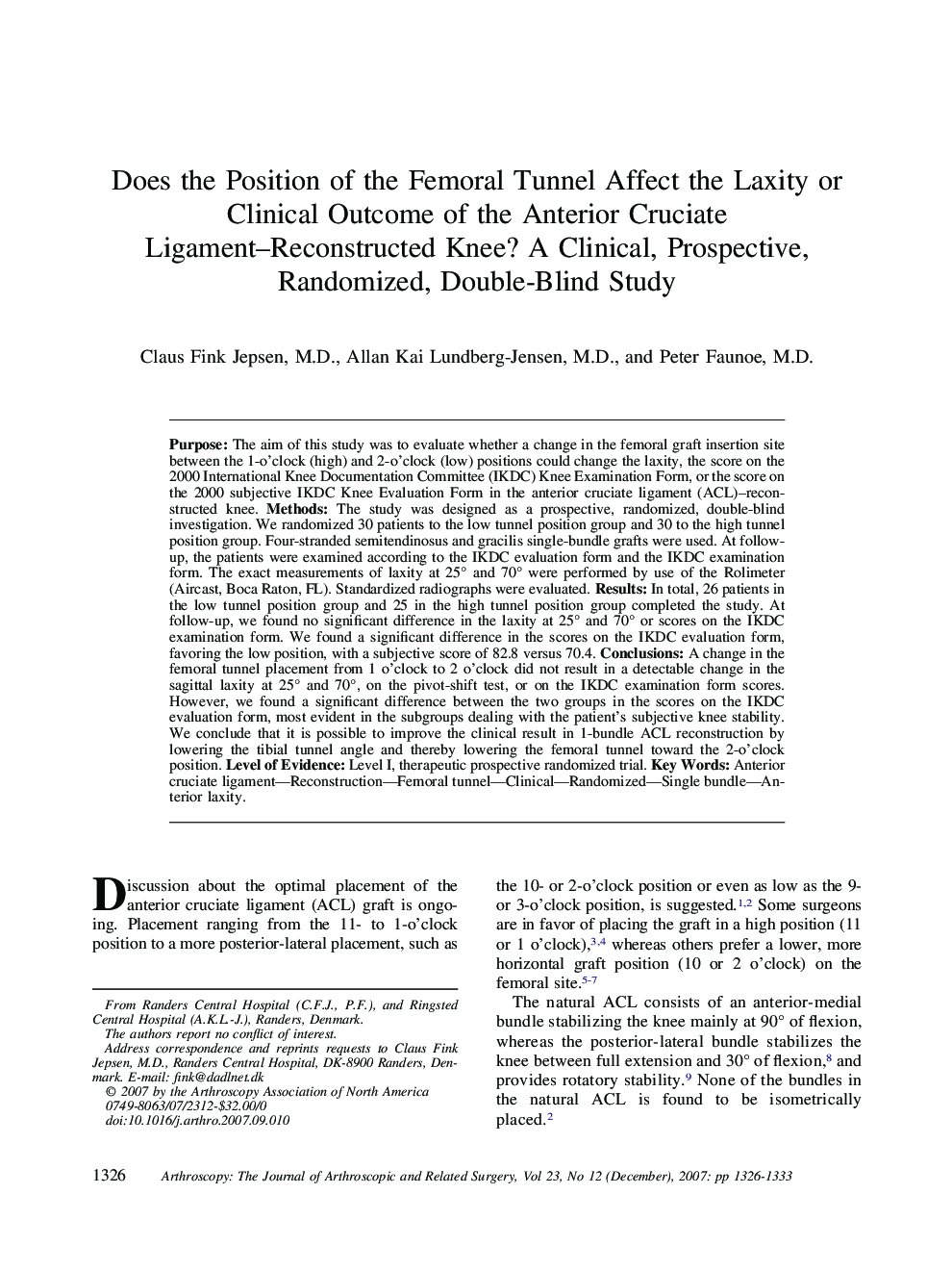| Article ID | Journal | Published Year | Pages | File Type |
|---|---|---|---|---|
| 4045308 | Arthroscopy: The Journal of Arthroscopic & Related Surgery | 2007 | 8 Pages |
Purpose: The aim of this study was to evaluate whether a change in the femoral graft insertion site between the 1-o’clock (high) and 2-o’clock (low) positions could change the laxity, the score on the 2000 International Knee Documentation Committee (IKDC) Knee Examination Form, or the score on the 2000 subjective IKDC Knee Evaluation Form in the anterior cruciate ligament (ACL)–reconstructed knee. Methods: The study was designed as a prospective, randomized, double-blind investigation. We randomized 30 patients to the low tunnel position group and 30 to the high tunnel position group. Four-stranded semitendinosus and gracilis single-bundle grafts were used. At follow-up, the patients were examined according to the IKDC evaluation form and the IKDC examination form. The exact measurements of laxity at 25° and 70° were performed by use of the Rolimeter (Aircast, Boca Raton, FL). Standardized radiographs were evaluated. Results: In total, 26 patients in the low tunnel position group and 25 in the high tunnel position group completed the study. At follow-up, we found no significant difference in the laxity at 25° and 70° or scores on the IKDC examination form. We found a significant difference in the scores on the IKDC evaluation form, favoring the low position, with a subjective score of 82.8 versus 70.4. Conclusions: A change in the femoral tunnel placement from 1 o’clock to 2 o’clock did not result in a detectable change in the sagittal laxity at 25° and 70°, on the pivot-shift test, or on the IKDC examination form scores. However, we found a significant difference between the two groups in the scores on the IKDC evaluation form, most evident in the subgroups dealing with the patient’s subjective knee stability. We conclude that it is possible to improve the clinical result in 1-bundle ACL reconstruction by lowering the tibial tunnel angle and thereby lowering the femoral tunnel toward the 2-o’clock position. Level of Evidence: Level I, therapeutic prospective randomized trial.
